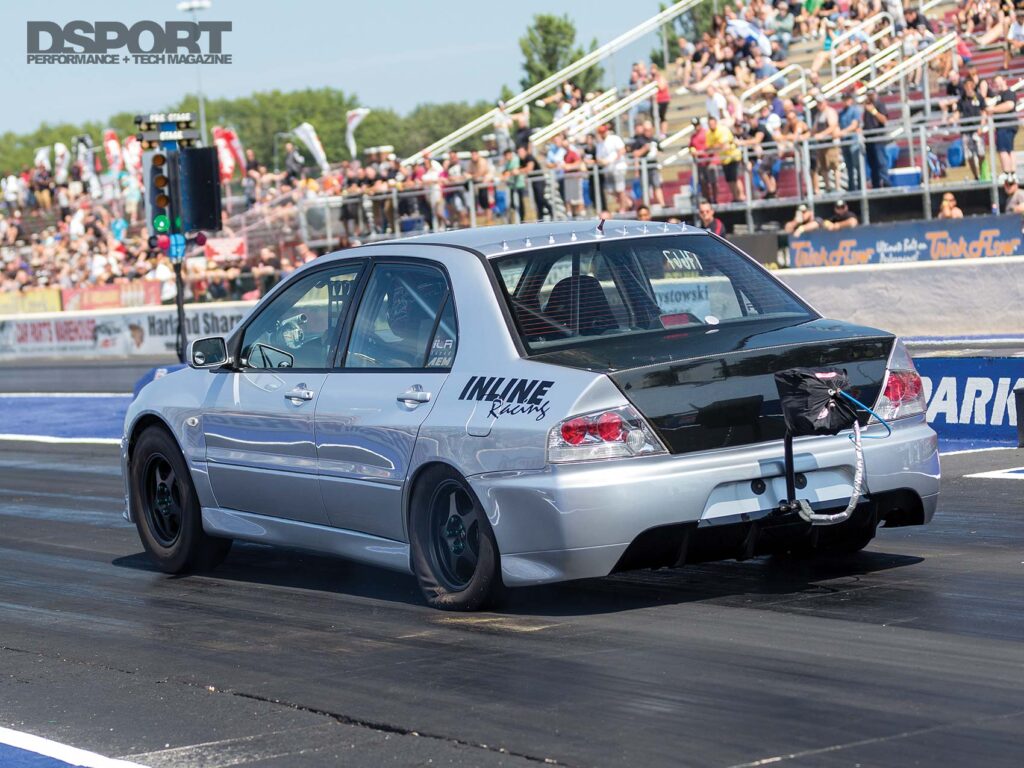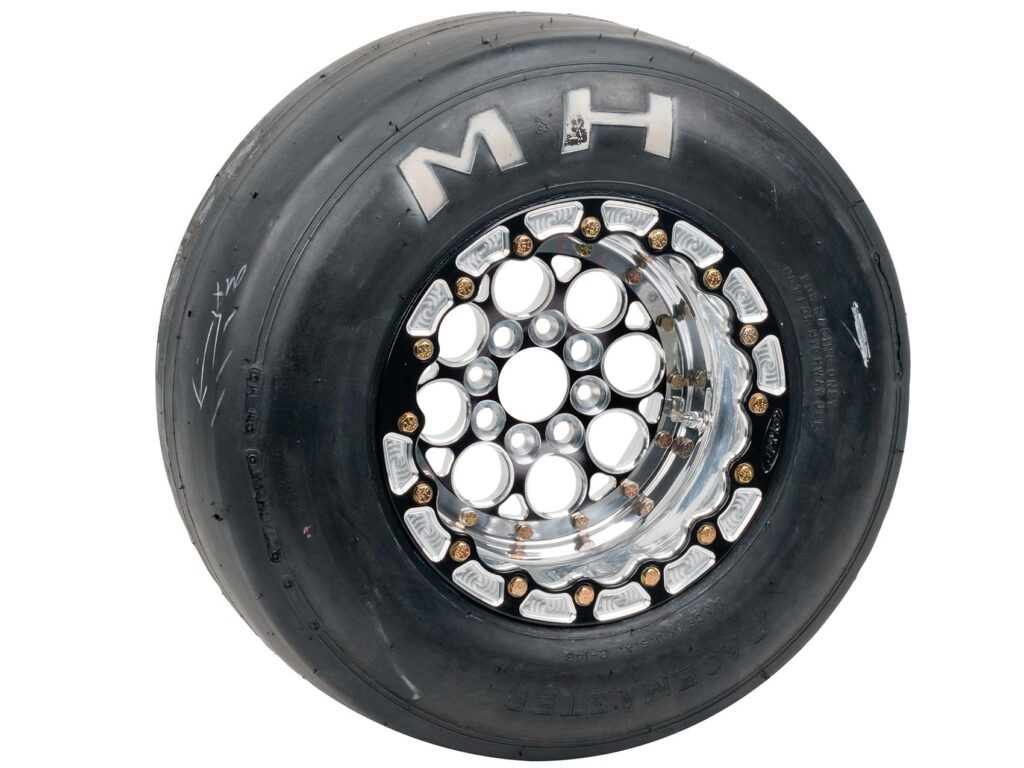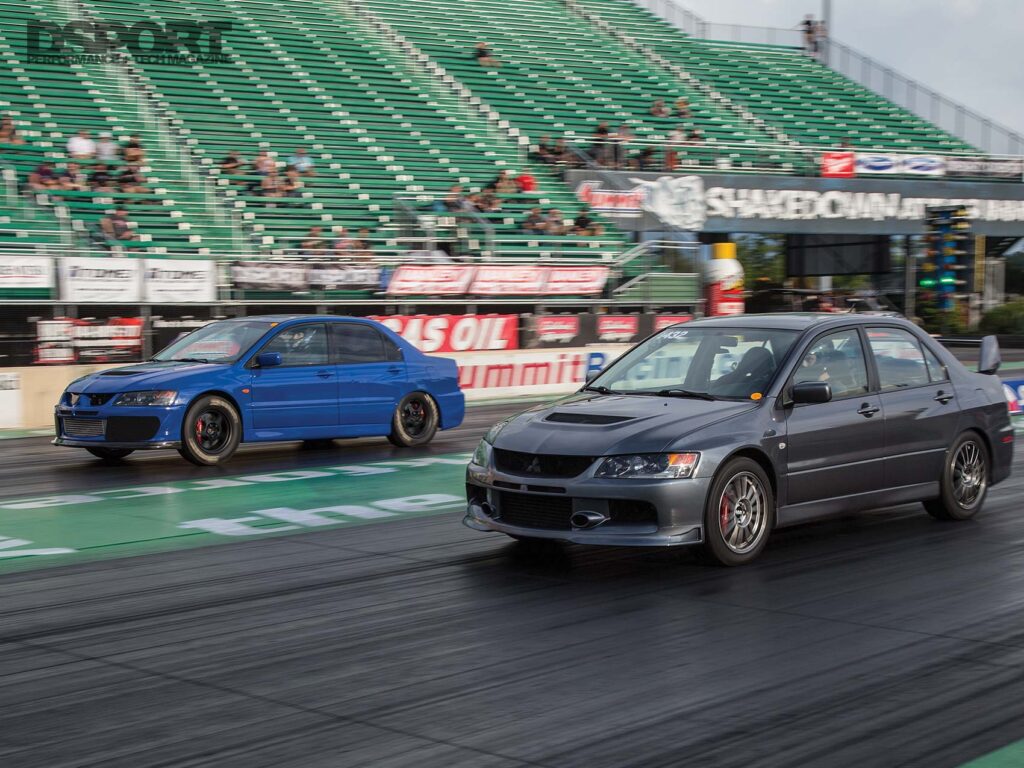How to Read Drag Racing Time Slips
S o you finally made it to your get-go drag strip. You launch your auto, get to the finish line safely, and on your way dorsum, the track employee gives y'all a receipt. Your friend tells y'all that it's your time slip, so you accept a photograph of information technology pointing at your xv-2d run time, and mail information technology to your Instagram. If this is all you exercise with your time skid, then you're doing it wrong. The time sideslip could be a great guide to improving your racing technique. Instead of just using it to see how quick your run was (or wearisome), here's how to use it to your advantage so you can first improving and salvage the bragging until you maximize your machine'southward potential and have the best run you and your auto are capable of achieving.
Text by Bassem Girgis // Photos by DSPORT Staff
DSPORT Issue #220
The Fourth dimension Skid
While information technology may look like a Walmart receipt, the time slip has valuable information that is disquisitional to comeback and fine tuning, fifty-fifty for the most professional elevate racers. In the previous event of DSPORT (issue 219), we discussed everything you need to know near staging. In that story, we discussed everything that happens from the exhaustion until your light turns light-green and your front tire moves by the stage axle. So, what happens after? Once the stage beam is uninterrupted from your front tire, it triggers the time and now the clock is officially ticking. On the time sideslip, you lot will run across R/T (Reaction Time), 60', 330', 660', 1/eight-mile, MPH (for the 1/8-mile), 1,000', ¼-mile, and MPH (again for the quarter-mile). Hither's a breakdown of how each of these is calculated and what they mean to y'all behind the bike.

Your time sideslip can tell you a lot about your driving technique. Your sixty-pes time is critical to your overall performance. A ho-hum 60' can indicate a poor launch. Adjusting tire PSI, launch RPM, clutch slipping, etc. could improve your launch, which would meliorate your 60' time and your elapsed time.
Reaction Fourth dimension
The reaction time is the time information technology takes from when your light turns light-green, until your front tire stops interrupting the stage beam. This plays into shallow and deep staging that we discussed in the previous issue. The deeper you've staged, the more than you are at chance of red-lighting. The shallower you stage, the college your reaction time volition exist, but yous will have more than of a chance to consummate the run without cherry-red-lighting. Be sure to read our Elevate Racing 101 story in the previous result to find out the all-time practise for you. In one case y'all move by the stage beam, you move onto the 60-pes time on your slip.
In the midst of being overwhelmed with your first launch, beginner racers often forget to turn off their traction control. With traction control on, your organization detects the smallest bike slippage and automatically applies the ABS to that bike or cut engine power to it. Obviously, the terminal matter you want during launch is any types of braking. This completely kills your time. While we say wheel slippage hurts your 60' time, some degree of slippage is necessary to protect your transmission.
60-Foot
As the name implies, the 60-foot marking is 60-feet away from the starting line triggered past an infrared beam. The first time I dragged raced, I kept looking at the elapsed time and I never paid attention to my 60-ft. My fourth dimension never improved even though I kept trying to shift quicker. When I looked at my threescore-ft fourth dimension, I realized that my AWD WRX should be capable of half of that time on its worst day. This told me that I am launching all incorrect. This time will tell you how well you're launching. If your tires are slipping too much on the launch, your 60-ft time will hurt. The more than your 60-ft time decreases, the better your launch will get. Your 60-ft time volition vary depending on the tires you apply, your blazon of tires, your launching technique (clutch release, launch RPM, etc.), the track training, and how hot the rail is. However, if yous're comparing runs from the aforementioned day, yous should exist able to fine melody your style to reduce that number.
Switching to operation tires or drag radials will show massive comeback in your 60-foot time, which volition result in a much improved elapsed fourth dimension. Tire slippage volition hurt your 60' time, and while adjusting the tire pressure, launch RPM, and clutch slipping/dumping techniques can show lower times; upgrading the tires volition be virtually rewarding.
330', 660', 1/eight-Mile, i,000' Time
Yous launch successfully, the car takes off, and you have your all-time lx-ft time. Now comes the shifting. 330-feet away in that location is some other beam, followed past the 660-feet (1/8-mile), and the 1,000'. These beams measure out all of these times respectively. Beyond the threescore-foot time comes your first-to-2nd gear shift, and how quickly you lot're shifting, how properly yous're shifting, and the correct RPM you're shifting at will affect your time. The 330' and the 660' are the middle-of-the-runway guide that allow y'all to amend on shifting betwixt first-to-2d, and second-to-third depending on your transmission's gear ratios. Some tracks similar Irwindale Dragstrip are only 1/8-mile. In which example, that'due south your terminal end before you are braking. Everything between your 60-ft and your finish line can help you ameliorate on shifting through the gears.
i/4-Mile
The goal is to have the all-time quarter-mile time, so your concluding pace is the ane/4-mile/stop line beam. Once you cantankerous the end line, the clock stops and your elapsed time is the result. The elapsed time starts when the stage beam is uninterrupted and the finish line's beam is interrupted. So, if your tree goes greenish and you never motility, your elapsed timer won't start until your front tire rolls past the phase light; notwithstanding, your reaction time starts with the greenish. Finally, to measure your MPH, the speed trap sits 66-anxiety before the stop line. The speed trap records the boilerplate speed between that 66-feet and the finish line, and that shows on your fourth dimension slip as your miles per hour.
Bracket vs Heads-Upward
Bracket racing is when the competitor predicts (dial-in) how long it volition take to reach the finish line. If the competitor reaches the finish line at, or below, his dial-in time before his opponent, he is a winner (given he didn't red-light). So, if you dial-in at 10.40-seconds, you launch without scarlet-lighting, attain the terminate line before your opponent, and finish with a 10.40-seconds or lower, you win. If you lot finish with 10.41-seconds or higher, yous lose.
The same concept goes for handicap racing. The only difference is the driver with the slower dial-in time launches commencement to go a head start. The divergence between the 2 dial-in numbers is the difference in launch time between the competitors.

Each competitor determines their dial-in fourth dimension before the race. Some drivers have been racing for decades and they know their cars extremely well, while others make a few runs before their race to decide their dial-in time. The dial-in time gets written on the automobile.
Also under subclass racing is the alphabetize class. In this type, the handicap is pre-determined and the competitors' goal is to get as close to the alphabetize as possible without running quicker. If the index is ten.00-seconds, the competitors will try to go as close as possible to the 10.00-2nd mark, only not quicker.
Equally for the heads-upward racing, both competitors launch at the same fourth dimension, and the first to cross the finish line wins. Heads-up racing involves no dial-in time or breakout; nevertheless, blood-red-lighting kicks you lot out of the race as in whatsoever type of drag racing.
Heads-upwardly racing does non have a dial-in time or breakout. Both competitors launch at the aforementioned time, and whoever crosses the stop line first without red-lighting takes the win.
The Bottom Line
Equally you can see, the time slip is crucial whether you lot are trying to ameliorate your launch, shifts, or you are racing in some of the popular drag racing classes and you demand to find out your dial-in time. The most of import fourth dimension when you're starting out is your 60-ft time. This will tell y'all whether yous're making the best out of your launches or you're lagging. The better the launch, the better elapsed time yous will have. Experiment with your clutch if you're racing a transmission. If you're dumping the clutch and your tires are spinning as well much, effort slipping it instead. Experiment with your launch RPM to make sure information technology'southward not too low that you lot're having a weak launch or too high that you're spinning. If you keep spinning, try reducing your tire pressure ii to 5 PSI at a fourth dimension. Most importantly, make one change at a time and so you learn what's working for you. Once you've established what's working, and then try making one more modify, reassess, and repeat.
Drag Racing 101 >>
Source: https://dsportmag.com/the-tech/education/performance-tech-drag-racing-102/





